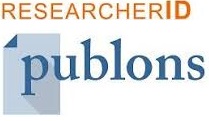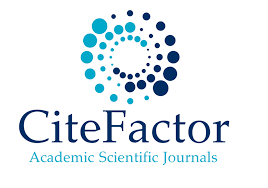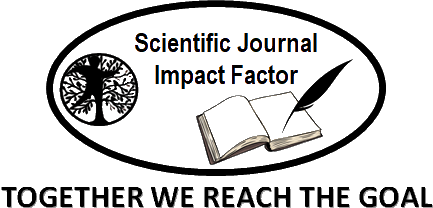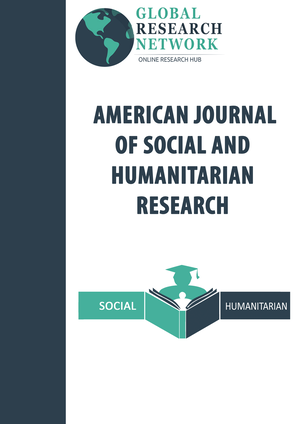Inventory of Understory Plants in Dusung and Its Benefits In Waeheru Village, Ambon City
Abstract
This study aims to find out the dominant and useful types of underplants as biopharmaceutical ingredients. This study uses a vegetation analysis method by purposive sampling using a sample plot measuring 1m x 1m. The results of the study showed that in the dusung in Waeheru Village, 32 types of understory plants were found consisting of 3 types of ferns, 24 types of wide leaves, 4 types of grass and 1 type of puzzle from 23 tribes. Of the 32 types of undergrowth, 21 types of plants were found to be efficacious as biopharmaceutical ingredients (herbal medicines), 4 types were useful as fruit producers, alternative foodstuffs, wood and building materials; Meanwhile, 5 types are not yet known for their efficacy and benefits. The dominant plants are Selaginella wildenowii SDR 8.44, Axonopus compresus SDR 8.06 and Sphagneticola triloba SDR 7.33. Based on the community coefficient value, the plant communities compared are not the same because the community coefficient value is 23.84%.
Keywords
Full Text:
PDFReferences
Maluku Provincial Central Statistics Agency., 2022. Maluku Province in numbers.
Bangun, A., 2012. Encyclopedia of Indonesian Medicinal Plants. 101 Amazing Medicinal Plants for Optimal Healing and Wellness. Indonesia Pulishng House Bandung.
Cox G.W., 1985. Laboratory Manual of General Ecology. Dubuque-Iowa: Brown Company Published.
Fernandes, A., D. Agency., 2016. The Potential of Weeds as a May Medicinal Plant.
Hamzah, N, N Absa, S. Syakri, N.S. Dhuha, and I. Ismail, 2017. Inhibition Activity of Growth of Micobacterium Tubercolosis and Plasmodium Falciparum from Methanol Extract of Botto-Botto Leaves (Chromolaena odorata Linn). Journal of Pharmacy UIN Alauddin Makassar, vol 5, No 4, pp 277-293.
Hariana, H.A., 2013. 262 Medicinal Plants and Their Properties. Penebar Swadaya, Jakarta.
Kusumanegara, A., E.Y. Pribadi, A.M. Jannah, M. Yuniar, H.S. Utomo, and D.A.N. Ngara. 2020. Revealing the Secrets of Types of Medicinal Plants in Matalawa National Park, Sumba, East Nusa Tenggara (NTT). Manupeu Tanah Daru and Laiwangi Wanggameti National Park Halls.
Laimeheriwa, S. 2014. Analysis of Rainfall Change Trends in Three Regions with Different Rainfall Patterns in Maluku Province. Journal of Agricultural Cultivation 10(2):71-78-.
Ludwig, J.A., J.F. Reymonds., 1988. Statistical Ecology a Primer on MethodsMethodsand Coputing. John Wiley and Sons. New York etc.
Madubun, E.L., A.K. Kilkoda, I.G. Walasari., 2023. Inventory of Weed Types in Clove Plants (Zyzygium aromaticum L) with Different Places in Waai Village, Salahutu District, Central Maluku. Journal of Agrologgia vol 12, no 1, pp 77-87, 2023.
Manar, P.A., 2018. Knowledge of Plant Ethnopharmacology (Imperata cylendrica L) by Several Ethnic Communities in Indonesia. University of North Sumatra: TALENTA Cofernce Series (3), 1-4
Nikmah, N., Jumari, Erry Wiryani., 2016. Structure of Plant Composition under Teak Stand in Clone Seed Garden (KBK) Bojonegoro View. Journal of Biology, vol 5 no. 1 January 2016.
Nugroho, L.H., Yustina Sri Hartini, 2020. Pharmacognosy of Medicinal Plants isspecific to the Genus Piper. Gadjah Mada University Press.
Purwanto, S. 2015. Antibacterial activity test of active fraction of senggani leaf extract (Melastoma malabatricum L) against Escherichia coli. Sriwijaya Journal of Nursing, vol 2, pp 84-92
Setiawati, W., R. Murtiningsih, N. Gunaeni, and Rubiati., 2008. Plant Plant Pesticide Ingredients and How to Make Them for the Control of Plant Pest Organisms (OPT) of the Vegetable Crop Research Institute.
Setyawan, AD, 2009. Traditionaly Utilization of Selaginella, field Research and Literature Review. J Nusantara. Bioscience 1 (3): 146-158.
Setyowati, N, Kasrina, A.P. Yani and R. Piskara, 2009. Types of Weeds with Potential as Medicine. Pros Sem Nas Etnobotany IV, pp 288-292
Sianipar, M.B., 2021. Effect of Ethanol Extract of Feather Leaf (Clidenia hirta L. D. Don) on Healing of Burns in Mice (Mus musculus L)
Soejani, M. A.J.G.H. Kostermans, G. Tjitrosoepomo (Eds). Weeds of Rice in Indonesia. Jakarta Library Center.
Suparmi and A. Wulandari., 2012. Herbal Nusantara 1001 Traditional Herbs Original Indonesia. Yogyakarta: Andi offset
Tutu Bili, Desmon., 2020. Pharmacological Effects of the Princess of Malu Plant (Mimosa pudica Linn). Journal of Beta Chemistry, vol 2, no 2 November 2022.
Tjoa M, Th. Silaya, J.W. Hatulesila, C.M.A. Wattimena, G Mardiatmoko., 2010. Dusung Traditional Agroforestry Pattern in Ambon and Surrounding Areas. In Budiadi, Wulandari C, Wijayanto, Editor. Proceedings of Traditional Agroforestry in Indonesia December 2010. Bandar Lampung: Unlam. Pages 61 – 75.
van Steenis, C.G.G.J., G and Hoed., S. Bloembergen and P.J. Eyma 2008. Flora. Pradnya Paramita. Jakarta (Twelfth printing)
Yulianto, S., 2017. The Use of Herbal Plants for Health. Journal of Midwifery and Traditional Medicine, vol, 2, no 1 March 2017. 1-59.
Yusron, F.H., F.H. Usman, and J. Syah. 2014. Ethnobotanical Study Utilized by the Community of Nekbare Hamlet, Babane Village, Samalantana District, Bengkayang Regency. Journal of Sustainable Forests, vol 2, no 3. PP 99-103.
DOI: http://dx.doi.org/10.52155/ijpsat.v48.1.6763
Refbacks
- There are currently no refbacks.
Copyright (c) 2024 Elia Leonard Madubun

This work is licensed under a Creative Commons Attribution 4.0 International License.



















